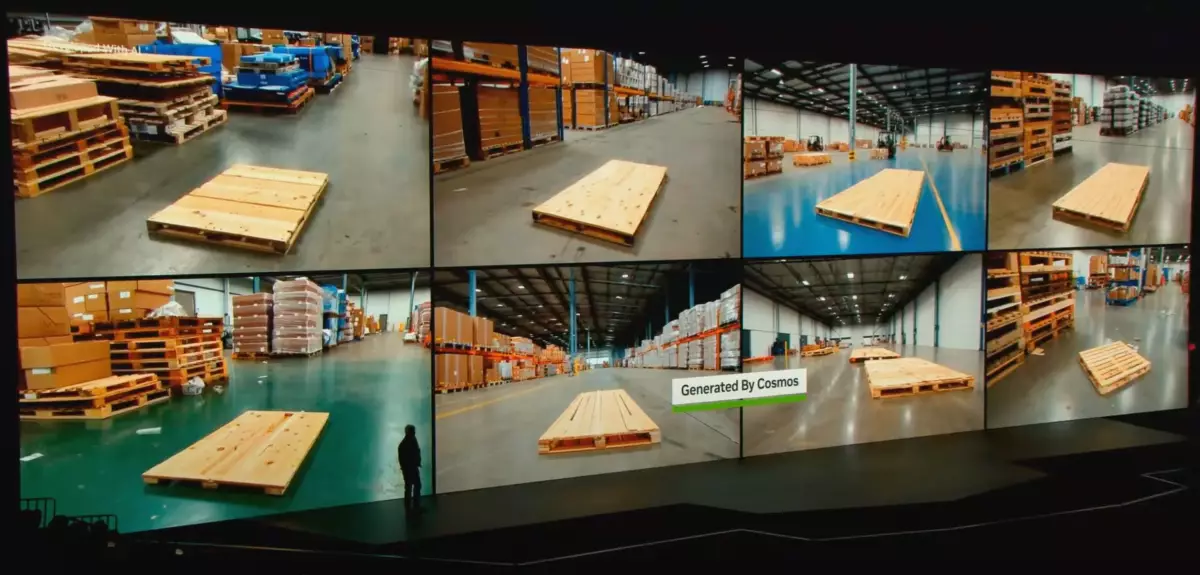At the forefront of the technological revolution, Nvidia has announced an ambitious leap into the realm of world models—advanced artificial intelligence systems that emulate the cognitive frameworks through which humans interpret the world. During the Consumer Electronics Show (CES) 2025 in Las Vegas, Nvidia unveiled its new family of AI models, dubbed the Cosmos World Foundation Models (Cosmos WFMs). These models are specifically engineered to predict and produce “physics-aware” video content that holds significant potential for practical applications across various industries.
The Cosmos WFMs are being positioned as a groundbreaking development that can genuinely transform industries that rely on simulation and synthetic data. By providing these models with an easy-access framework via Nvidia’s API, NGC catalogs, and platforms like Hugging Face, Nvidia seeks to democratize the use of sophisticated AI for researchers and developers of all sizes. The openness of the models, under a permissive license that allows for commercial usage, signifies a striking shift toward collaborative innovation in AI technologies.
The Cosmos WFMs family features three distinct categories of models tailored for different levels of operational demands. The Nano models are designed for low latency and real-time applications, providing essential agility. Meanwhile, the Super category serves as a versatile baseline option with enhanced performance capabilities, while the Ultra models aim for the pinnacle of quality and detail, accommodating complex, high-fidelity outcomes. Ranging from 4 billion to 14 billion parameters, these models demonstrate a general principle in AI: an increased number of parameters typically correlates with superior problem-solving capacity.
Notably, Nvidia is not just stopping at providing core models; they are also releasing auxiliary tools. This includes an “upsampling model” optimized for augmented reality, a video decoder, and various guardrail models to ensure ethical application. Specific adaptations are geared towards practical use cases, such as generating sensor data critical for the evolution of autonomous vehicles. This comprehensive approach suggests that Nvidia is aware of the multifaceted nature of modern AI applications, striving to cater to industry-specific needs.
While Nvidia presents the Cosmos WFMs as an innovative leap, questions around ethical data use loom large. The training data for these models—a staggering 9,000 trillion tokens harvested from 20 million hours of real-world data—has come under scrutiny. Allegations have emerged claiming that Nvidia may have inadvertently utilized copyrighted material from platforms like YouTube, raising serious concerns about intellectual property rights. A spokesperson for Nvidia defended their data collection methods, asserting that their approach aligns with both legal standards and ethical norms. They argue that as the facts about how the world operates are inherently non-copyrightable, their models are designed to learn without infringing protected works.
However, the complexities of AI training datasets and their connection to copyright law remain contentious. Legal experts caution that Nvidia’s claims could falter in judicial assessments of fair use, particularly when considering the transformative nature of AI training. As public sentiment shifts increasingly towards awareness of digital rights, Nvidia’s defensiveness surrounding Cosmos WFMs may be seen as a reflection of a larger industry dilemma about the boundaries of innovation and intellectual property rights.
Despite potential setbacks regarding ethical data use, the practical applications of the Cosmos WFMs have captured the attention of major players within the industry. Well-known companies including Waabi, Wayve, Fortellix, and Uber are gearing up to explore the possibilities offered by these sophisticated models. The shared ambition among these firms underscores the widespread belief that generative AI holds the key to revolutionizing mobility solutions and the development of more advanced autonomous systems.
Uber CEO Dara Khosrowshahi succinctly encapsulated this sentiment, expressing confidence that collaboration with Nvidia can expedite the timeline for achieving safe and scalable autonomous driving. This level of endorsement illustrates the collective aspirations of the industry—transforming theoretical advancements into tangible solutions that can redefine how we interact with technology in our daily lives.
While Nvidia has branded Cosmos WFMs as “open,” it is essential to delineate this from the more traditional sense of “open source.” To qualify as genuinely open-source, an AI model typically should facilitate transparency regarding both its architecture and training data, enabling the community to recreate it from scratch. Nvidia’s models, however, do not disclose extensive details about their training datasets or provide necessary tools for complete reproducibility.
This deviation from strict open-source principles may raise questions about long-term access and adaptability. The tech giant’s consideration of Cosmos WFMs as platforms to catalyze innovation in robotics and industrial applications may indicate a strategic choice to foster growth in a controlled yet expansive manner.
The launch of Nvidia’s Cosmos WFMs marks a significant milestone in the evolution of AI power and accessibility. While they invite enthusiasm for their transformative capabilities, the ethical dimensions and regulatory implications surrounding data usage must also be evaluated carefully. As Nvidia and its partners venture into uncharted territory, the stakes are high, promising exciting advancements alongside critical conversations about the responsible development of AI technologies.

